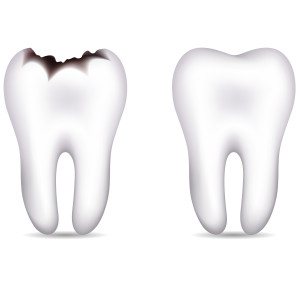 Given the prevalence of tooth decay, there’s a good chance that you’re familiar with a dental filling. In fact, if you’re among the 90% of adults who’ve been affected by decay in one or more permanent teeth, you’ve probably had a dental filling placed at some point.
Given the prevalence of tooth decay, there’s a good chance that you’re familiar with a dental filling. In fact, if you’re among the 90% of adults who’ve been affected by decay in one or more permanent teeth, you’ve probably had a dental filling placed at some point.
Typically, a tooth-colored dental filling can treat your cavity and preserve the health of your tooth, all while blending in with your tooth’s appearance for a more discrete restoration.
How Cavities Grow
Though effective, a dental filling can only successfully treat a cavity if it’s caught at the right moment. As a progressive disease, tooth decay (which causes the holes to form in your teeth) grows increasingly worse, consuming more of your tooth’s structure as time goes by. It begins when acid produced by oral bacteria weaken your tooth’s protective layer of enamel, allowing bacteria access to your tooth’s main structure (called dentin).
Enamel erosion can usually be reversed when detected and treated early, but when allowed to advance, it can quickly result in tooth decay. As the main part of your tooth, dentin contains small tubules that send sensory information to your tooth’s nerves and blood vessels. When dentin is infected by decay, it can cause varying degrees of tooth discomfort, and if left untreated, threaten your entire tooth.
Remove Decay; Reinforce the Tooth
Many people visit the dentist when their teeth begin to ache, and often find that decay has settled into one or more of their teeth. When the infection permeates your dentin, your dentist will have to remove the infected tooth tissue to stop the progression of decay, then replace the removed tooth structure with a manmade dental filling.
Crafted from innovative composite resin, tooth-colored dental fillings are tinted to match your natural tooth’s color, blending in with your smile to create a restoration that doesn’t diminish your smile’s attractiveness.







